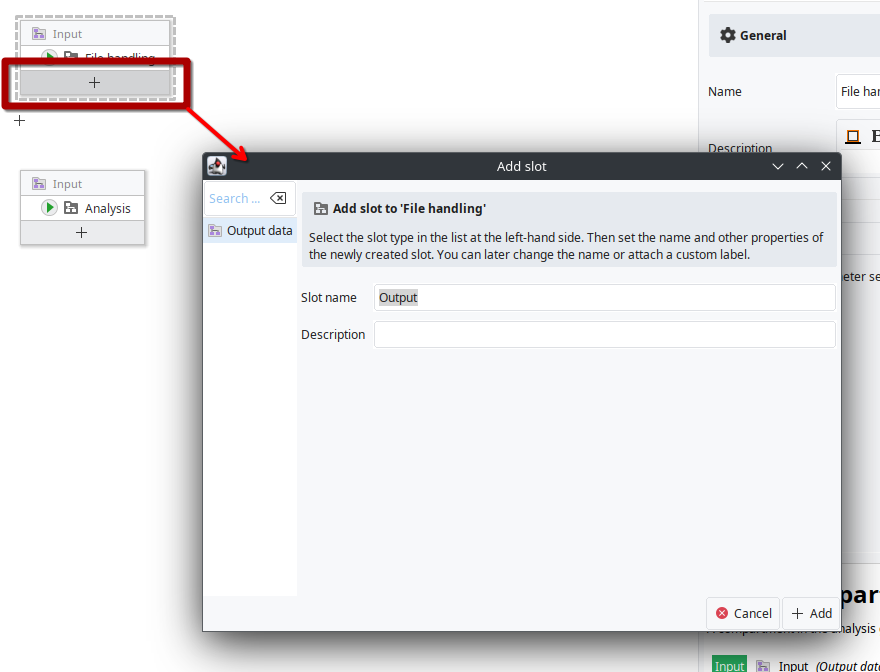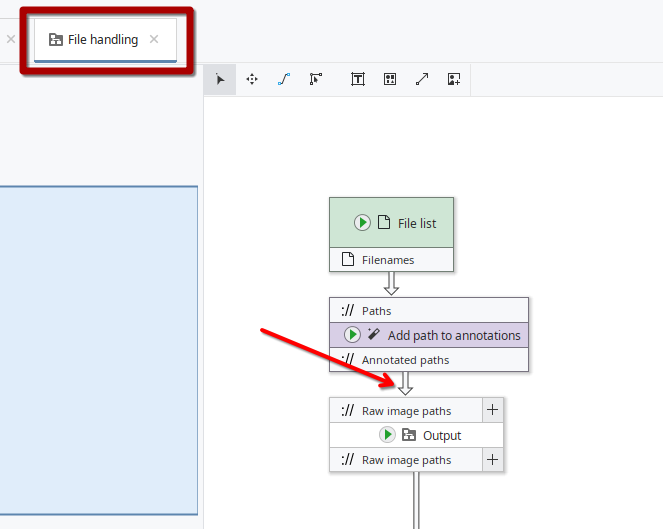Graph compartments
For larger projects that may involve hundreds of nodes, it becomes at some point essential to split the pipeline into smaller units, for example one for file handling, another for segmentation, and units for handling visualizations or generating statistics.
Graph compartments are JIPipe's main mode of visually separating the workflow into multiple units without splitting the pipeline from a functional standpoint. This means that nodes in two different compartments are technically still part of the same pipeline, but are organized via the user interface.
Creating compartments
JIPipe always organizes pipelines into compartments. Just by default, there is only one ("Analysis") present that is opened immediately upon creating a new project. To create a new compartment, open the Compartments tab by either navigating to the tab (if present) or by clicking the Compartments button at the top-right of the window.

In the compartments editor, you can either drag the Graph compartment node into the pipeline or double-click the item, similar to how the Add nodes panel behaves for workflow graphs.
The workflow represented by the compartment can be opened by double-clicking it.
Connecting compartments
By default, no data is passed between compartments. The data transfer is established by adding one or multiple outputs to the source compartment and connecting it to the Input slot of the target compartment.
Outputs are created similar to workflow-nodes by clicking the ![]() at the bottom of the compartment node.
at the bottom of the compartment node.

The resulting output then can be connected to the input.

To determine which data should be passed to the other compartment, connect data to the newly created Output node that appeared in the source compartment.

The output node is an IO interface node that passes data from the source to the target compartment. Here you then can connect it to the workflow.

Executing compartments
Compartment nodes within the Compartments editor have a ![]() button that is internally connected to the output IO interface nodes. The same applies to the Results panel of a compartment node.
button that is internally connected to the output IO interface nodes. The same applies to the Results panel of a compartment node.
This feature allows to run parts of the pipeline without navigating into the compartments, thus making your pipeline more user-friendly.
Compartment parameters
To ensure that users of your workflow are not required to navigate through your pipeline to change parameters, you can connect parameters from within your workflow to the compartment node.
To do this, select the compartment and navigate to .

In the dialog you will first need to create a new group by clicking . You can set the group name and description and then will be able to add parameters into the group via . Select the parameter of interest and confirm the selection. The parameter is now also available from within the compartment.